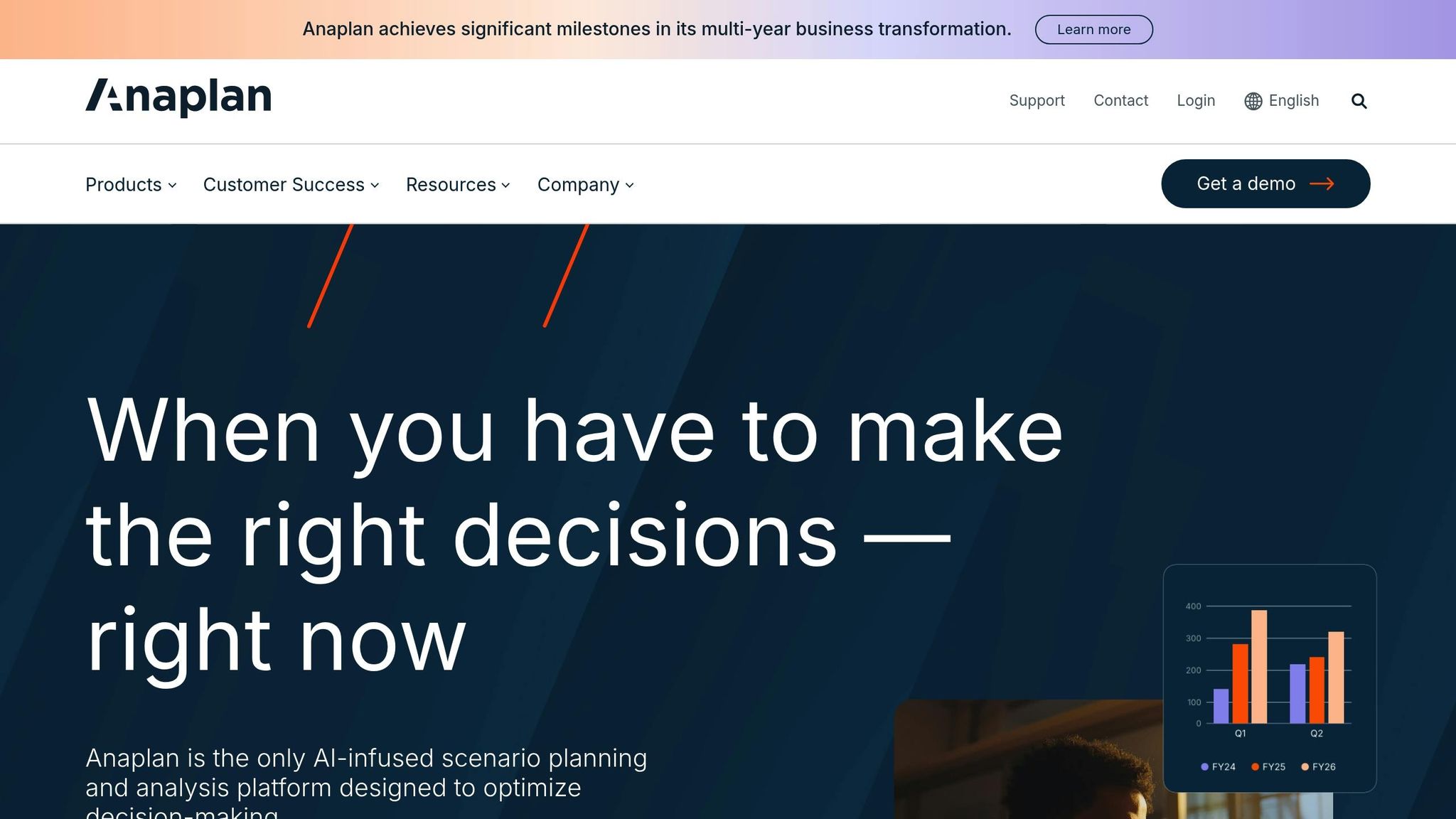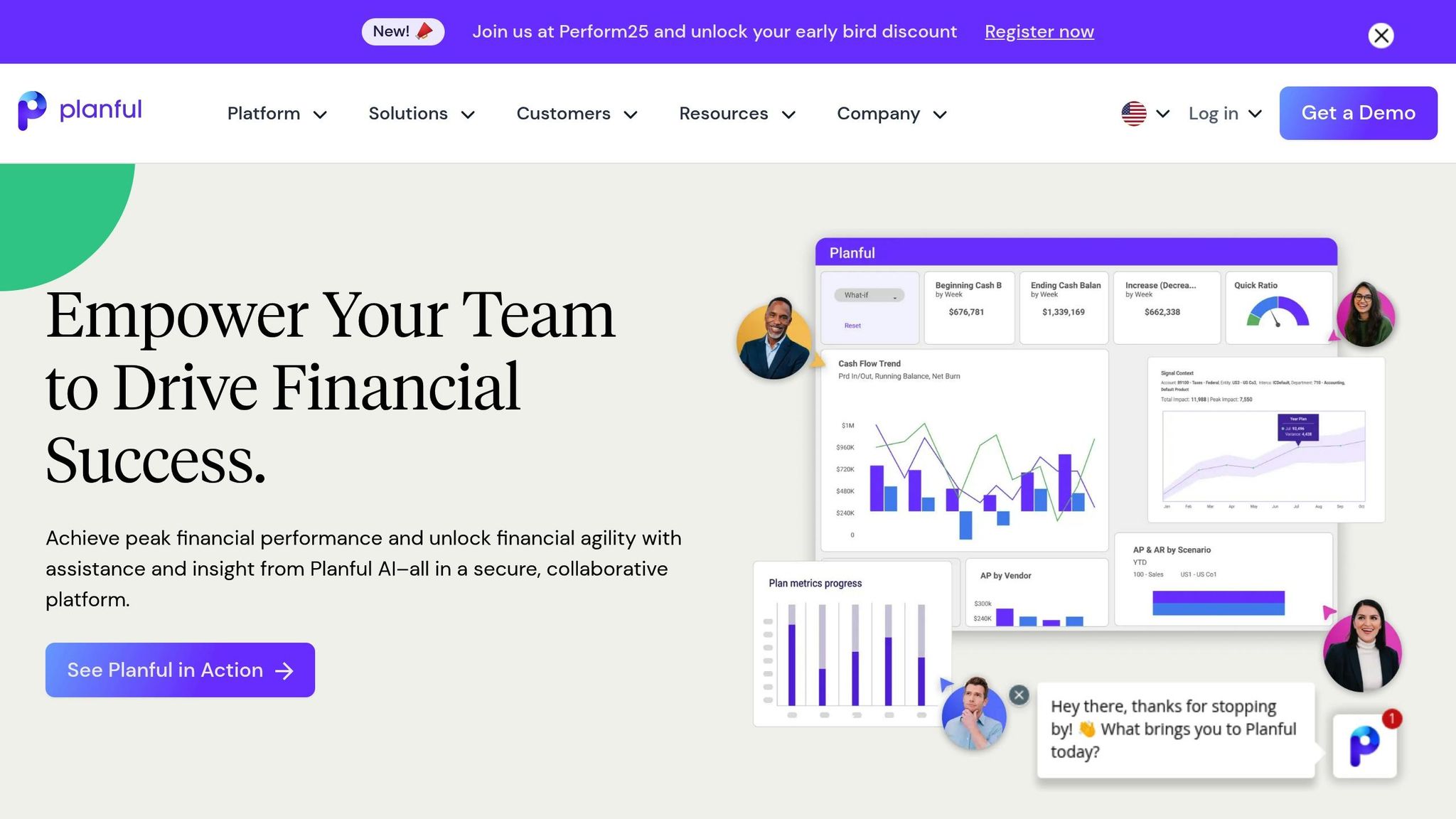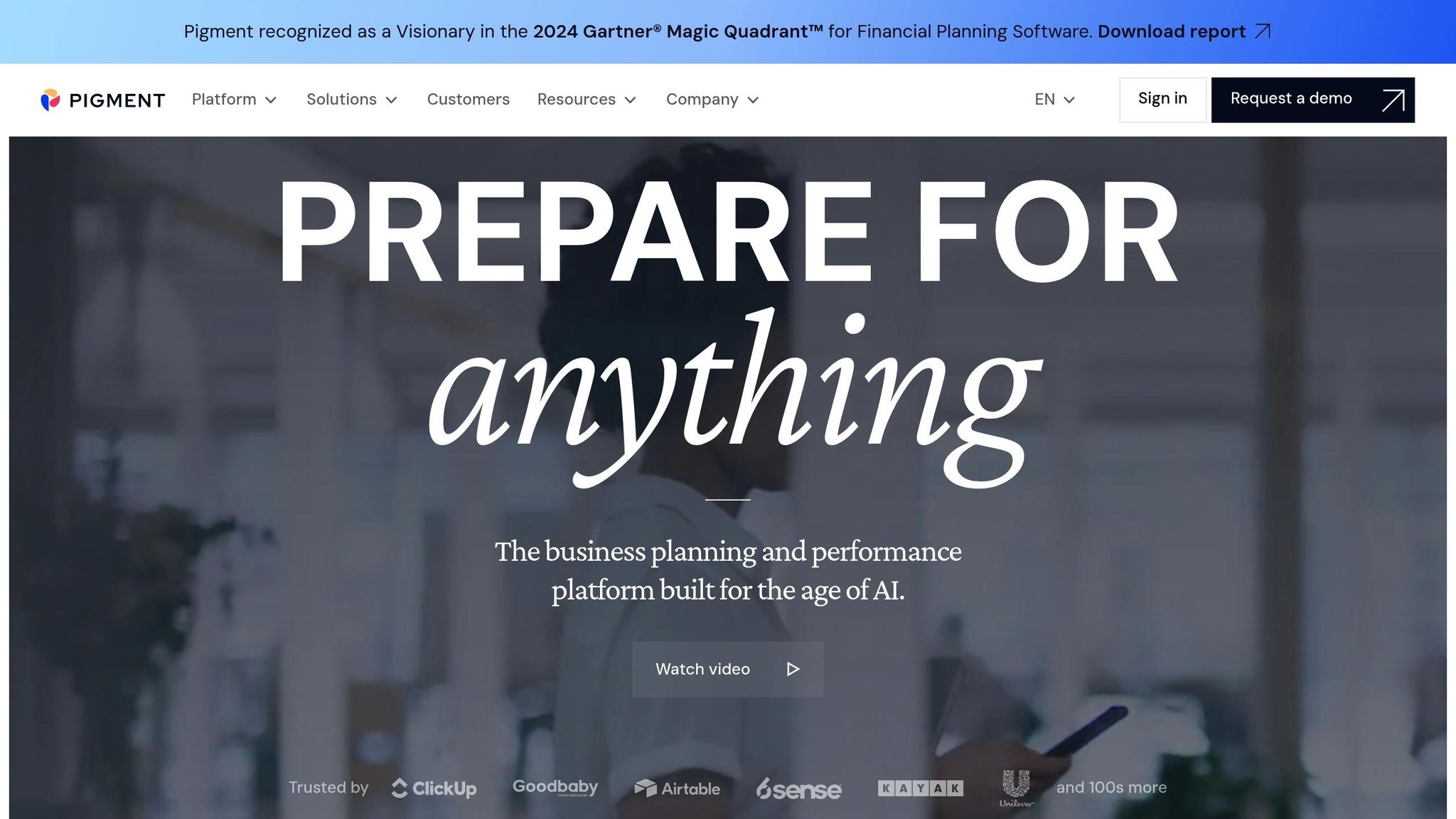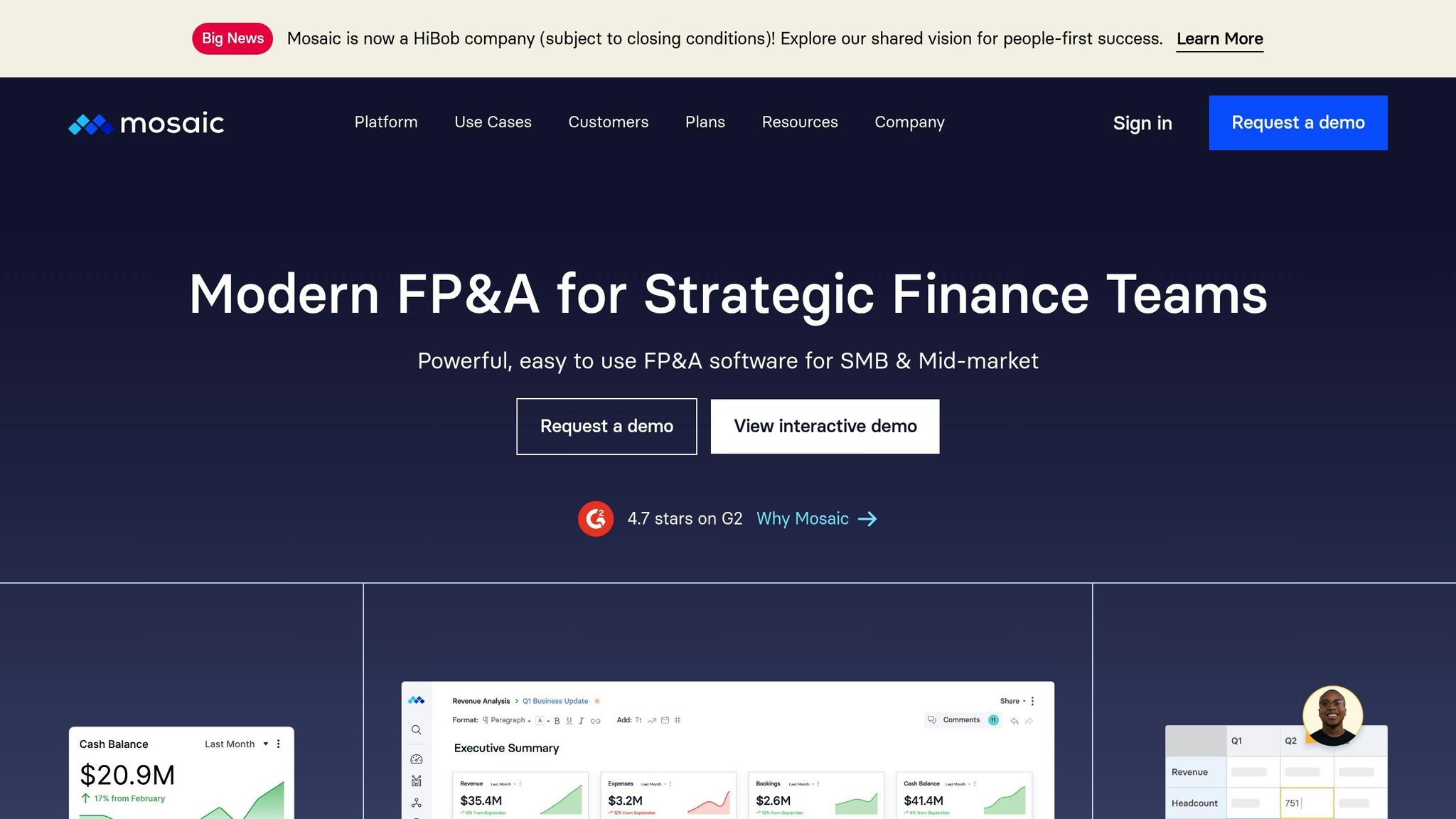Want more accurate budget forecasts? AI tools can help by analyzing data, spotting patterns, and updating predictions in real-time. Here’s a quick look at four AI platforms that are transforming forecasting:
- Anaplan: Great for large businesses with complex data needs. Features include Connected Planning and real-time scenario modeling.
- Planful: Focused on financial planning and analysis tasks, ideal for mid-sized companies.
- Pigment: Excellent for scenario-based planning with a user-friendly interface and real-time data updates.
- Mosaic: Automates finance tasks and integrates with tools like QuickBooks, offering trend analysis and scenario planning.
Quick Comparison
| Tool | Best For | Key Features | Integration Options | Cost Suitability |
|---|---|---|---|---|
| Anaplan | Large enterprises | Connected Planning, scenario modeling | Extensive enterprise tools | Higher investment |
| Planful | Mid-sized companies | Continuous planning, FP&A focus | Financial systems | Moderate investment |
| Pigment | Agile scenario planning | Visual interface, real-time updates | Strong data connectivity | Enterprise-friendly |
| Mosaic | Finance automation | Trend analysis, scenario planning | QuickBooks, NetSuite, Salesforce | Affordable for SMBs |
Choose the right tool based on your business size, complexity, and budget needs.
High Level Overview of Anaplan PlanIQ for Budget Forecasting

1. Anaplan
Anaplan excels in AI-driven budget forecasting with its Connected Planning feature, which brings together financial and operational data in one place. By leveraging machine learning, the platform allows for real-time scenario modeling and automatically adjusts its models to reflect market shifts. This system is especially useful for multi-unit companies, as it consolidates diverse data sources into cohesive budgets. It's a go-to tool for businesses looking to refine their forecasting processes.
Next up is Planful, which takes a different approach to continuous planning.
2. Planful

Planful works alongside your financial systems, simplifying data management and improving the accuracy of forecasts.
However, there isn't much publicly available information about its AI tools or performance metrics. Businesses should thoroughly assess Planful to ensure it aligns with their forecasting requirements.
While Anaplan offers a broader Connected Planning approach, Planful zeroes in on essential FP&A tasks, delivering a more focused solution for financial forecasting.
sbb-itb-bec6a7e
3. Pigment

Pigment is a business planning platform designed to improve budget forecasting. It pulls data from various sources in real time, helping finance teams make better decisions based on accurate and up-to-date information. Up next, we’ll take a closer look at how Mosaic handles strategic finance automation.
4. Mosaic

Mosaic focuses on finance automation to streamline budget forecasting. By leveraging machine learning, it reviews historical budgets to identify patterns and trends.
The platform integrates with popular financial tools like QuickBooks, NetSuite, and Salesforce, enabling real-time data updates. This eliminates much of the manual data entry work and helps minimize errors.
Mosaic uses three main forecasting methods:
- Trend Analysis: Looks at past data to find recurring patterns and seasonal trends.
- Driver-Based Modeling: Pinpoints key business metrics that influence budgets.
- Scenario Planning: Builds multiple budget scenarios based on different variables.
An intelligent learning system refines forecasts as new data comes in and flags unusual changes, helping teams address potential problems early.
Next, we’ll compare the performance of these tools to better understand their strengths.
Tool Comparison Results
This section breaks down how the top four AI-driven budget forecasting tools stack up across key areas like predictive modeling, integration, cost, and performance.
Predictive Modeling Capabilities
- Anaplan: Designed for large-scale enterprises, it offers a powerful modeling framework for complex forecasting.
- Planful: Focused on analyzing historical data, making it ideal for traditional forecasting needs.
- Pigment: Features a visual interface tailored for scenario planning, helping users explore various outcomes with ease.
- Mosaic: Prioritizes ease of use, delivering quick and efficient forecasting for teams needing faster results.
Integration and Scalability
- Pigment: Excels in connecting to various data sources with strong data connectivity.
- Mosaic: Automates data syncing for seamless operations.
- Anaplan: Supports extensive enterprise integrations, making it suitable for larger organizations.
- Planful: Offers a balanced approach, catering to diverse business requirements.
Cost and Suitability
- Anaplan and Pigment: Best suited for enterprises with complex forecasting needs, offering advanced features that justify their investment.
- Planful and Mosaic: Better options for mid-sized companies, providing quicker returns with simpler, streamlined functionalities.
Adapting to Dynamic Markets
Your choice should align with your organization's data needs and goals. For businesses handling intricate data models, tools with advanced predictive capabilities are a better fit. On the other hand, companies seeking faster deployment may benefit more from straightforward, easy-to-implement solutions.
Summary and Recommendations
Based on our tool comparisons, here are suggestions tailored to different business needs and industries.
Recommendations by Business Profile
- Large Enterprises: Anaplan is ideal for businesses with complex forecasting needs. It offers advanced modeling, multi-currency support, ERP integration, and detailed scenario planning.
- Mid-Sized Companies: Planful provides streamlined processes, moderate forecasting models, and fast implementation - perfect for mid-sized operations.
- Emerging Companies: Mosaic stands out with its automated workflows, real-time updates, and flexible reporting capabilities.
Industry-Specific Insights
The table below highlights tools suited for specific industries:
| Industry | Recommended Tool | Key Feature |
|---|---|---|
| Technology | Pigment | Agile scenario planning |
| Manufacturing | Anaplan | Supply chain integration |
| Professional Services | Mosaic | Project revenue forecasting |
| Retail | Planful | Seasonal trend analysis |
Additional Considerations
When choosing a tool, factor in the total cost of ownership, which includes software costs, integration fees, and ongoing support. Make sure your selection aligns with your company’s growth plans and budget limitations.
For more details on AI tools, check out AI for Businesses.


